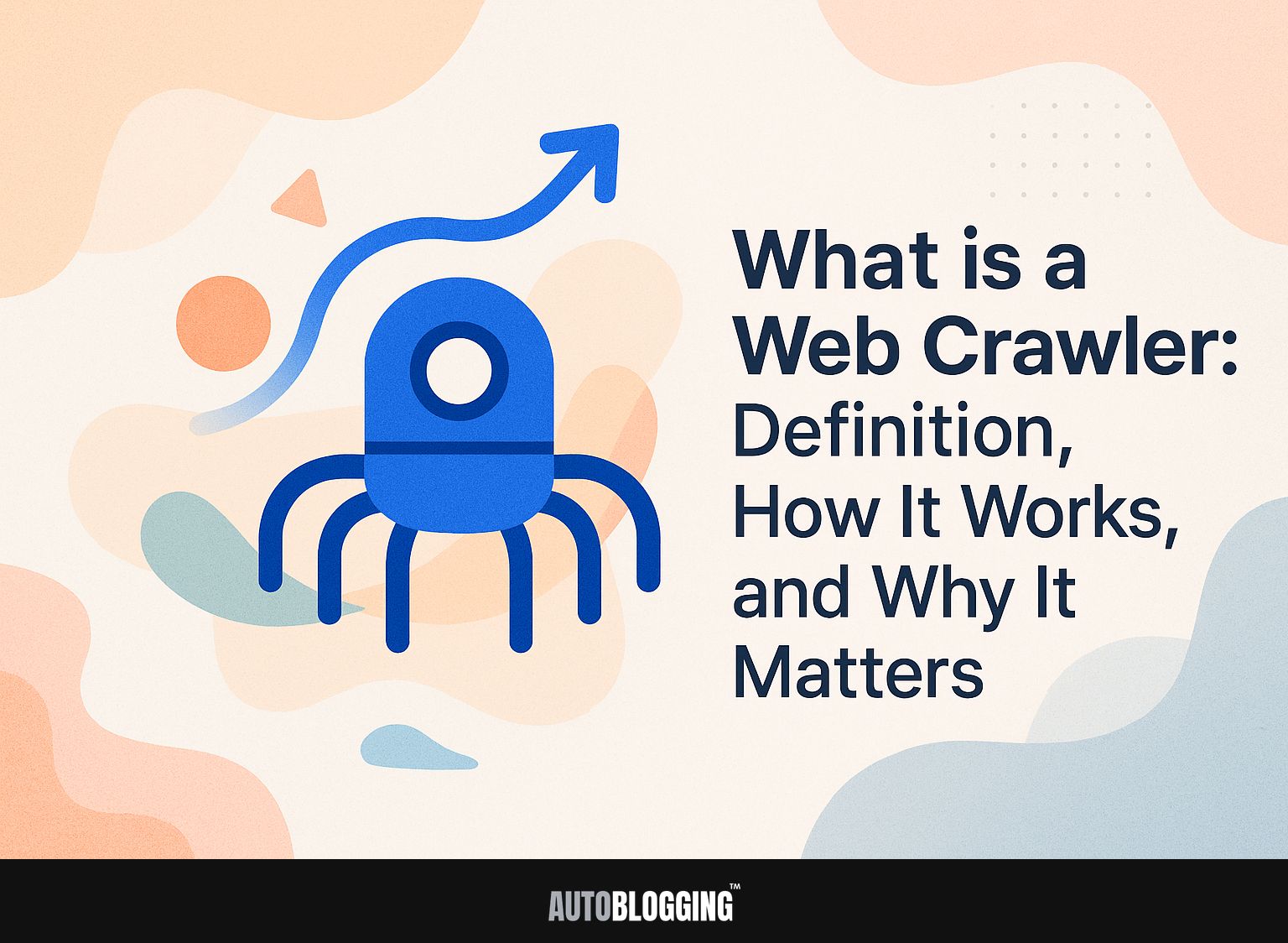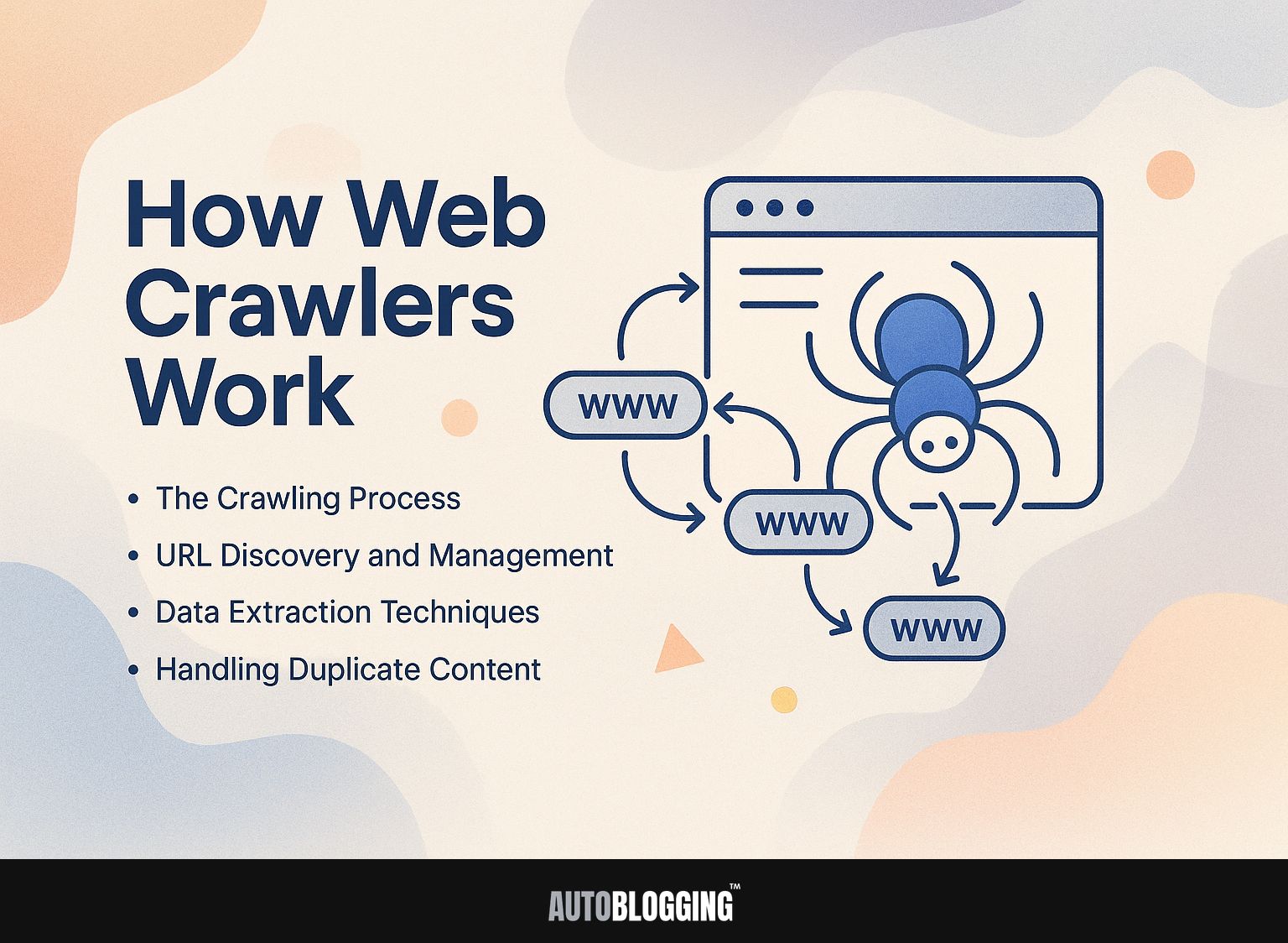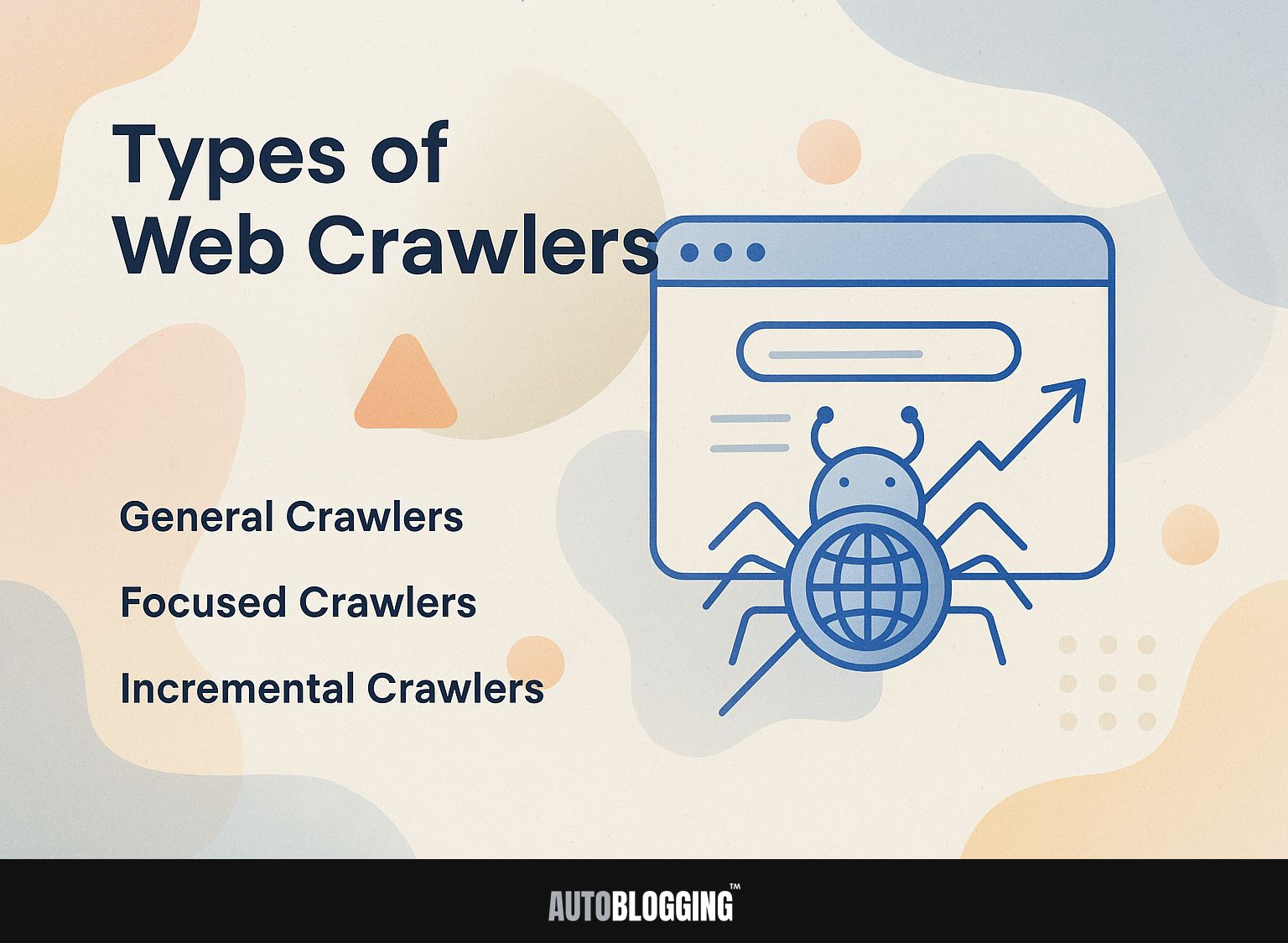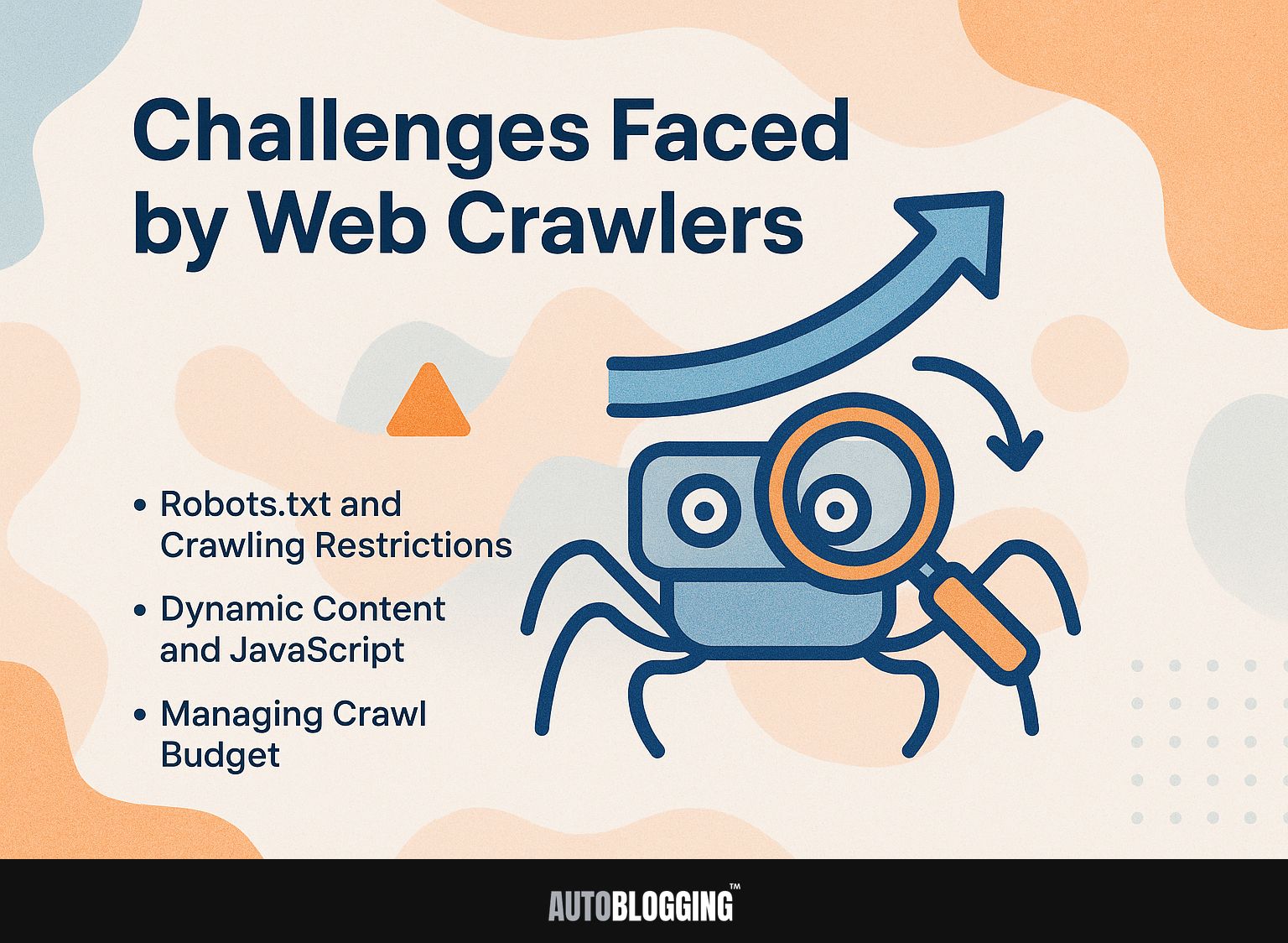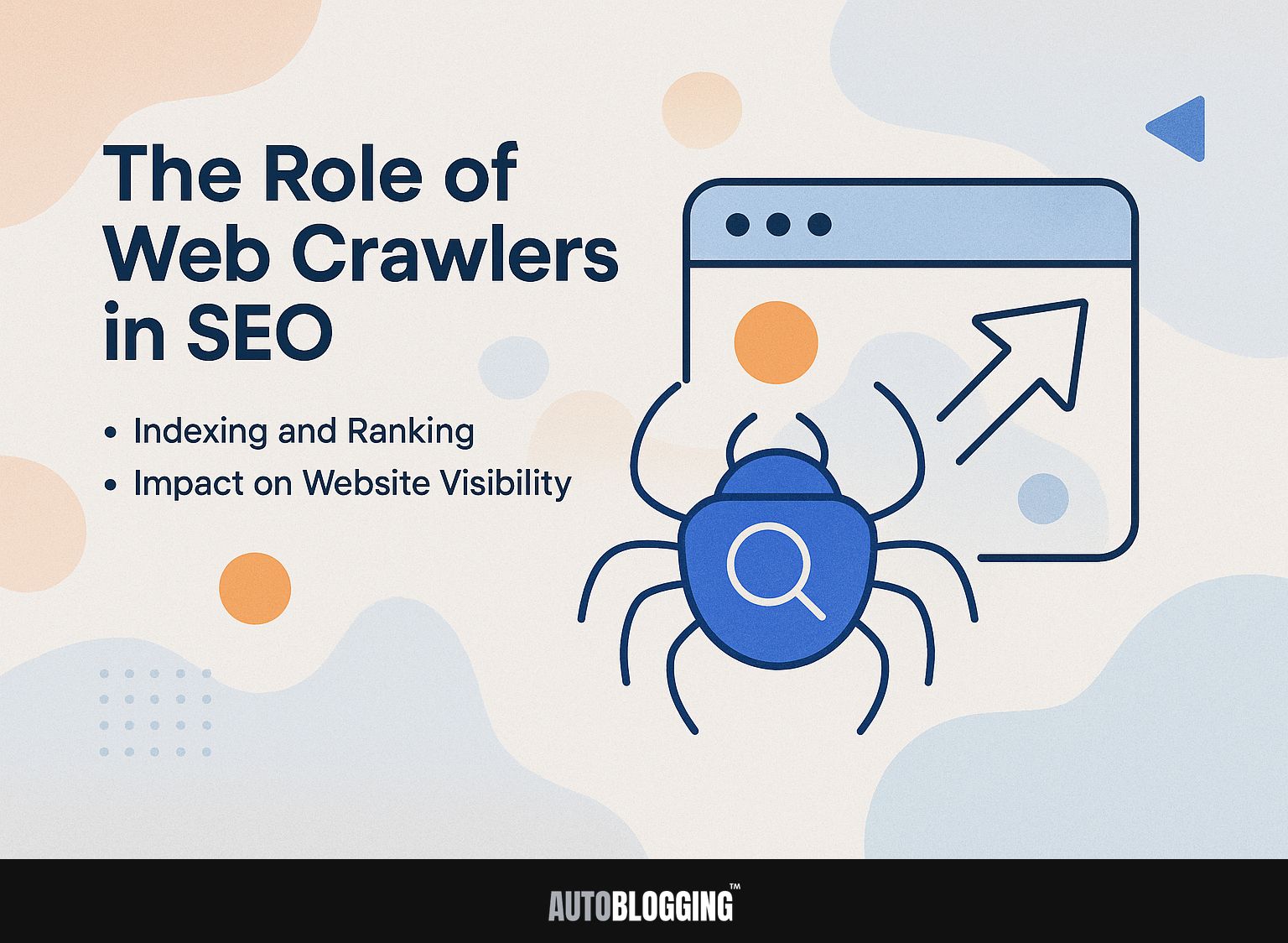Have you ever thought about how Google and Bing provide search results that are relevant so fast? The answer lies in web crawlers, sophisticated tools that index pages and power search algorithms. Knowing how these online tools function and the need to prevent crawl errors can improve your website’s exposure. In this article, we will explain what web crawlers are, how they work, and their important function on the internet.
Key Takeaways:
- Web crawlers are computer programs that go through websites and gather information. They are important in keeping and improving the large amount of information found online.
- The crawling process includes finding and managing URLs, getting data, and dealing with repeated content. However, web crawlers deal with issues like limits, changing content, and handling crawl budget.
- Web crawlers also play a significant role in SEO, as they help with indexing and ranking websites. With advancements in AI and machine learning, web crawlers are becoming more efficient and ethical considerations are also being taken into account.
Contents
1. Definition of a Web Crawler
A web crawler, sometimes called a web spider or bot, is a software program that automatically browses the internet and collects web pages for search engines such as Google and Bing.
These crawlers collect data on various website elements, such as keywords, URLs, and metadata, enhancing the search functionality by ensuring pages are ranked according to relevance.
For instance, Googlebot, a widely recognized crawler, indexes billions of pages, helping users find information quickly.
The process begins with a list of URLs that the crawler checks to find new content and changes. This plays an important role in SEO strategies by affecting how a website shows up in search results.
2. Importance in the Digital Ecosystem
Web crawlers are critical for maintaining the relevance of search results, affecting how users interact with digital content and driving traffic to websites. They improve search engine quality by enabling the indexing of new content, which leads to higher click-through rates (CTRs) for fresh results.
For instance, a website regularly updated with relevant articles can expect to see CTRs increase by up to 20% within months.
To improve search engine indexing, use tools like Google Search Console to check indexing status and find crawling problems.
Make sure your website is easy to use and works well on mobile devices, which improves user experience and search engine results.
How Web Crawlers Work
Knowing how web crawlers work is important for improving web content and site performance in search results.
1. The Crawling Process
The crawling process involves bots moving through web pages, collecting their content, and following links to find new pages, like Googlebot does. This process begins with a bot requesting a page’s HTML, which contains text, images, and links. Once it gets the content, it looks for links to other pages and adds them to its list to visit later.
Managing crawl errors is important; for example, if a page shows a 404 error, the bot might try again after a pause or record the problem for checking later.
Google’s search system successfully uses a detailed crawling algorithm that updates search indexes often, so users can see the newest content.
2. URL Discovery and Management
Locating URLs fast is important for using crawl budget wisely, ensuring crucial pages are indexed promptly and resources are used effectively.
To improve how URLs are found, use sitemaps and create a solid plan for internal links.
- Start by creating an XML sitemap that lists all your important pages; use tools like Google’s Search Console to submit it. If interested, explore more about what an XML Sitemap is and how to create one.
- Next, establish internal links within your content, ideally linking to high-priority pages directly from relevant articles. This helps search engines find your URLs quickly and makes it easier for users to move around the site.
- Regularly review your site structure and internal links to update any changes, ensuring that all critical pages remain easily accessible.
3. Data Extraction Techniques
Web crawlers use different methods to analyze HTML pages and gather important data quickly, helping with proper cataloging.
Common techniques include DOM parsing, which allows crawlers to interact with the HTML structure directly, and XPath for selecting specific nodes in an XML document.
For JSON extraction, tools like BeautifulSoup in Python can make it easier to work with HTML, allowing users to easily move through and change it. For instance, a basic BeautifulSoup script can extract all links from a webpage in just a few lines of code.
Libraries like Scrapy can simplify the process by sending requests and handling multiple pages simultaneously.
4. Handling Duplicate Content
Managing duplicate content is essential for maintaining SEO integrity, as search engines penalize sites that fail to address this issue effectively.
To handle duplicate content well, use canonical tags to show which page version is the main one. Implement 301 redirects to guide both users and search engines to the original source.
For example, HubSpot reported a 20% increase in organic traffic after addressing duplicate content by consolidating similar articles with these methods.
Tools like Screaming Frog can help identify duplicates on your site, while Google Search Console will inform you about indexing issues. These practical steps are important for improving SEO results.
Types of Web Crawlers
Different types of web crawlers are built for specific tasks, each created to improve how data is gathered according to particular aims.
1. General Crawlers
General crawlers, such as Googlebot and Bingbot, scan large sections of the web and use wide-ranging algorithms to improve search results for users.
These crawlers work by going through websites in an organized way, focusing on pages that are important and trustworthy.
For instance, Googlebot employs a method called ‘link equity’ to determine the importance of a webpage based on backlinks. Because bigger websites have many links both to and from them, they are indexed quickly, giving search engines a lot of information.
This indexing improves search accuracy and affects SEO plans, helping site owners arrange their content and internal links to draw in bots.
2. Focused Crawlers
Focused crawlers are designed to target specific domains or content types, ensuring that they gather highly relevant data without extraneous information.
Common use cases for focused crawlers include academic research, where tools like “Scrapy” can extract specific data from scholarly articles, and niche content aggregation, such as using “Octoparse” for harvesting e-commerce product data.
These crawlers allow researchers to filter content by keywords or subject areas, enhancing the quality of their datasets.
Users can create filters and scripts to collect important data automatically, making the process quicker and easier.
3. Incremental Crawlers
Incremental crawlers monitor changes on pages they’ve already indexed, using crawl resources wisely by only checking pages that have new information. This approach saves server resources and improves indexing by cutting down on unneeded visits to pages that haven’t changed.
For instance, Googlebot employs incremental crawling, which allows it to prioritize high-traffic sites or those frequently updated, like news portals.
By refining its focus, it can increase the crawl frequency of significant changes. Metrics show that this approach can lead to quicker updates in search results, often improving a site’s visibility and relevance within weeks.
Using step-by-step crawling techniques fits well in changing online settings, helping sites stay competitive.
Challenges Faced by Web Crawlers
Web crawlers face many difficulties that can slow them down and reduce the quality of the content they index in search engines.
1. Robots.txt and Crawling Restrictions
The robots.txt file is a basic tool for website managers to control how web crawlers access the site, telling them which pages to include and which to skip.
To implement an effective robots.txt file, start with clear directives. For example:
- User-agent: *
- Disallow: /private/
- Allow: /public/
This structure tells all crawlers to avoid the `/private/’ section but allows access to `/public/’. Misconfiguration can lead to disastrous outcomes, such as inadvertently blocking critical pages from being indexed, which could hurt your site’s visibility in search results.
Regularly check your file to keep up with changes on your site.
2. Dynamic Content and JavaScript
Changing content can be hard for web crawlers to handle, especially if they rely on JavaScript, because it might not load during crawling.
To improve how search engines find your site’s changing content, think about using server-side rendering (SSR) or enhancing features over time. SSR builds pages on the server and delivers fully-formed HTML to search engines, which helps them index the content more easily.
For example, tools like Next.js make it easier to set up server-side rendering (SSR). In contrast, progressive enhancement involves starting with a basic HTML version of your site and then slowly including JavaScript. This makes sure that important content is available to crawlers first.
Companies like Airbnb use SSR to improve how search engines index their pages, which helps their SEO.
3. Managing Crawl Budget
It’s important to manage crawl budget well so search engines index the main pages of a website without unnecessary strain.
To maximize your crawl budget, start by improving your page loading speed. Tools like Google PageSpeed Insights can identify issues. Aim for a load time under 2 seconds.
Next, make your internal linking better by using the Screaming Frog SEO Spider. Find pages that are not linked and make sure they can be reached from your main menu.
Regularly remove or 301 redirect low-quality pages, which can dilute your crawl budget. Monitor your efforts using Google Search Console to track changes in indexed pages and organic traffic.
The Role of Web Crawlers in SEO
Web crawlers are important for SEO because they help with indexing and ranking, which influences how easily a website can be found in search results. To further understand the nuances of optimizing search visibility, it’s essential to grasp the concept of organic search. Worth exploring: What is Organic Search: Definition, Benefits, and How to Optimize.
1. Indexing and Ranking
Once crawlers retrieve web content, they index it based on relevance, influence page rank, and determine its position in search results. Many factors have a strong impact on indexing.
For example, the quality of backlinks can improve credibility, shown by how sites like Wikipedia rank well because of reliable incoming links.
On-page SEO elements like meta descriptions and keyword placement are important; improving these can greatly increase visibility.
You can use tools like SEMrush or Moz to study what your competitors are doing, which can help you improve your methods. Frequently refreshing your content helps search engines recognize it as new and important, which can lead to faster indexing.
2. Impact on Website Visibility
The success of web crawlers directly affects how easily a website is found, so it’s important for website owners to learn about and improve their crawling methods.
To make your site more visible, begin by using tools such as Google Search Console, which shows information about how effectively your pages are being scanned.
Regularly check the Crawl Stats report to identify any issues. Improving your site’s robots.txt file can clearly tell crawlers which pages to index.
Consider reducing the number of redirects, as excessive redirects can hinder crawl efficiency. Enhancing page loading speeds will encourage more frequent crawls, given that faster sites are prioritized by search engines.
Future of Web Crawlers
Web crawlers will improve with new AI and machine learning methods, leading to better ways of organizing and extracting data.
1. Advances in AI and Machine Learning
AI-powered web crawlers are set to change data collection by improving how they grasp content relevance and user goals.
Companies like Google and Microsoft are already using advanced AI algorithms to make their web crawling more efficient.
Google’s BERT model helps the search engine grasp complicated content better, so it can give more accurate results. Microsoft’s Azure Search uses AI to automatically update web indexing based on how users interact with the site, improving how easily the site can be found instantly.
When companies use these modern tools, they will receive more accurate information from online sources, resulting in improved user experiences and marketing plans.
2. Ethical Considerations
As web crawlers improve, the ethical concerns about copying content and using data become more significant for developers and webmasters.
To handle these ethical challenges, follow some recommended guidelines:
- Always ask content owners for approval before collecting data from their websites.
- Respect ‘robots.txt’ files, which outline the allowed and disallowed pages for crawling.
Anonymizing requests can help in protecting user data privacy. Make your reasons for data collection clear and open.
By following these guidelines, developers can uphold ethical practices while using web crawling technology responsibly.
3. Summary of Key Points
Key points of this discussion highlight the essential functions of web crawlers and their influence on SEO performance and user experience.
Web crawlers, also known as spiders or bots, move through the internet to catalog content, affecting how visible you are on search engines.
To make your website work well, organize it clearly and include an XML sitemap. Tools like Screaming Frog can help identify crawl errors, while Google Search Console allows you to submit sitemaps directly.
Frequently refreshing your content and effectively using meta tags can help your site be indexed properly, which improves user interaction and increases search rankings.
4. Final Thoughts on Web Crawlers
As online technology changes, it’s important for businesses to stay updated on web crawling methods to improve their search visibility.
Using effective methods to crawl websites can greatly improve your SEO work. Start by using tools like Screaming Frog for site audits, which can reveal useful information about page indexing and broken links.
Use Google Search Console to check for crawl errors and improve your sitemap to increase visibility. Regularly refreshing your content and using well-structured data can improve your site’s visibility to search engines.
As technology progresses, using AI-based tools for predictive analytics will improve your strategies, helping your business stay competitive.
Frequently Asked Questions
1. What is a Web Crawler?
A Web Crawler, also called a spider or bot, is a program created to browse the internet in an organized way and collect details about web pages. It is used by search engines to index websites and provide relevant search results to users.
2. What is the definition of a Web Crawler?
A Web Crawler is a program that automatically visits web pages and gathers information for search engines. It uses links to move from one web page to another, following the path set by the website’s structure.
3. How does a Web Crawler work?
A Web Crawler starts by visiting a list of web pages provided by a search engine. It then extracts links from those pages and follows them to other pages. It continues this process, creating an index of the content it finds on each page and ranking it based on relevance to certain search queries.
4. What is the importance of Web Crawlers?
Web Crawlers are essential for search engines to work effectively. They help search engines sort and list web pages, making it easy for users to find the information they want. Without web crawlers, search engines wouldn’t deliver accurate and fast search results.
5. What are the benefits of using a Web Crawler?
Web Crawlers help businesses and website owners improve their website’s visibility in search results. Website owners can improve their chances of being listed and ranked higher in search engine results pages by making their site easy for search engines to read.
6. How can I use a Web Crawler to improve my website’s search ranking?
To improve your website’s search ranking, you can use a Web Crawler to analyze your website’s structure and content. By finding and correcting any problems that might block the crawling process, you make sure search engines can properly index your website and show it in suitable search results.

